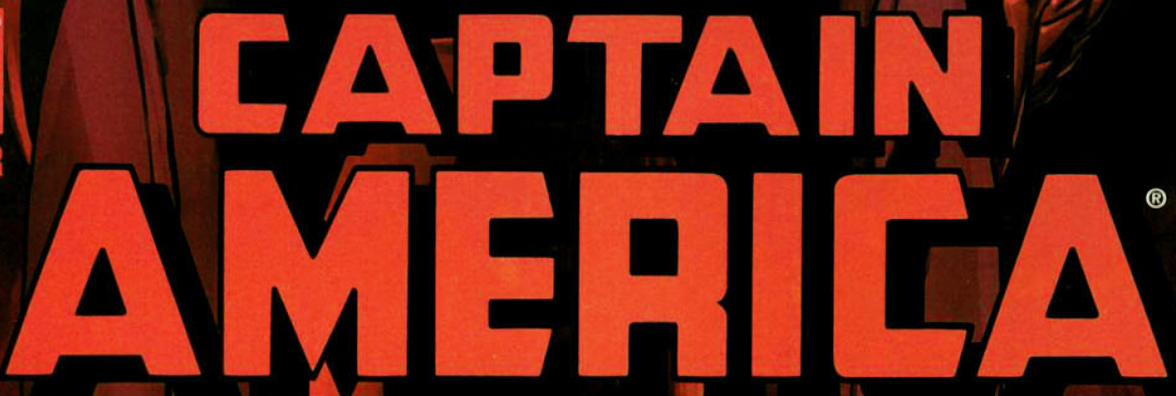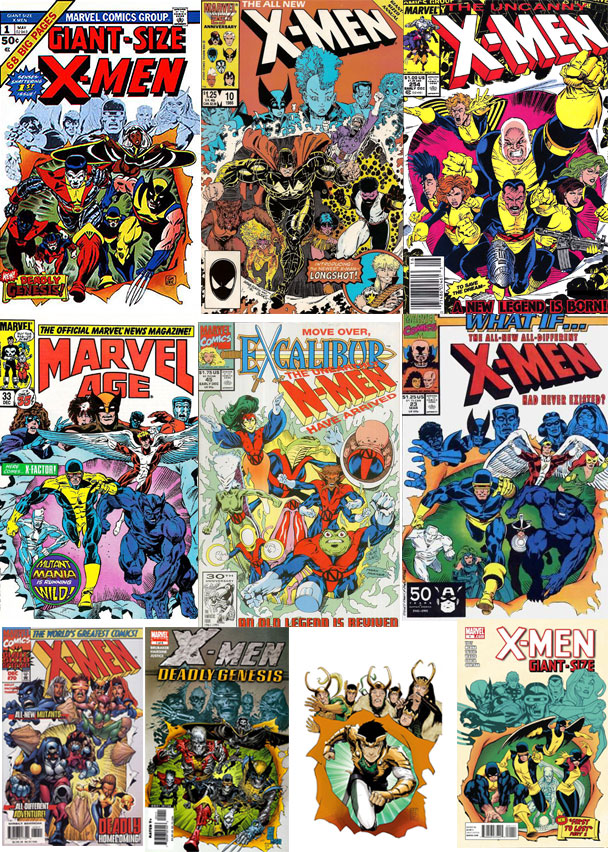Charles Hatfield | July 2, 2025
Ginseng Roots, a rambling blend of memoir, journalism, and history that took four to five concerted years to create, is Craig Thompson’s best book-length comic, full stop. It’s a formal triumph, a pained and complicated human story, and a didactic marvel — something I expect to reread and dip into again and again. Quixotic, genre-defying, and strange, it’s yet another sign that Thompson works himself very hard.
For years I’ve had a theory about Thompson: that he tricks himself into undertaking huge projects whose implications would be too complex and daunting to face at the outset. I suspect he sidles up to difficult work obliquely, rather than facing the scope of his ambitions directly. This has been my impression ever since I interviewed him, long ago.
Consider that his breakout book Blankets (2003) reportedly began as a memoir about first love, only to become, as it grew, a memoir about losing his religion. Likewise, the epic, career-bruising graphic novel Habibi (2011) began as a fantastical Oriental tale and perhaps a pained effort at East/West reconciliation post-9/11, but grew to include reflections on modern slavery, climate catastrophe, and water rights (all filtered through a bemusing eroticism). His neglected children’s book Space Dumplins (2015), presumably meant to be a lark, is overelaborate, a hoped-for soufflé that ends up more like a lovely paving stone. I bet it began with a happy spark of good intention and pleasure.
From my perspective, then, Thompson is not a naïve and spontaneous sharer of feelings (as early responses to Blankets might have led one to think) but a compulsive re-worker who labors to get from initial conception to some final, architectonic sense of form. Witness the strenuous architecture of the finished Habibi, which feels like a calculated superimposition over what began as a wild exploratory sprawl — that book is effortful. For some time, my favorite Thompson books were the least worked-over: the winsome semi-autobiographical fantasy Good-bye, Chunky Rice (his first book, 1999) and the travelogue Carnet de Voyage (2004), billed as a bit of relief after the ambitions of Blankets.
Ginseng Roots is something else. Serialized from 2019 to 2023 in twelve mini-sized issues from Tom Kaczynski’s Uncivilized Books, but now collected and revised as a doorstop from Pantheon, it feels like yet another project that Thompson worked his way up to gradually, another marathon that he somehow lured himself into. It’s wildly overambitious and sometimes pushes too hard, but it’s also a great gift. I still think Thompson works himself too hard, but as a beneficiary of that overwork, I should button my lip.

In brief, Ginseng Roots is a book about farming and farmers, specifically about ginseng production. It’s a cross-cultural expedition that involves interviewing growers and marketers in Wisconsin, Korea, and China. Much of it is journalistic, historical, or biographical, as it studies the ginseng industries, recounts the history of ginseng cultivation, and profiles individual stakeholders along the way. Yet it is also another memoir of “Craig,” one that revisits his family and homeplace in Wisconsin. As such, it revises (or undercuts) Blankets with new revelations about his life, even as it focuses on the years he and his siblings, especially his brother, spent working in the ginseng fields, weeding, picking stones, harvesting, and getting to know various farmers. So, all at once, it’s a roving chronicle, investigative study, and sequel to Blankets. Good grief.
It looks great. Thompson devotes much energy to visualizing farming, pharmacology, industry, geography, and geology in vivid comic-book terms, with craftily designed and sumptuously rendered pages that seek to make the driest or most recondite information absorbable, even pleasurable. He succeeds. For example, Chapter 3 starts by evoking the hype and energy of the first Wisconsin Gensing Festival (2017), then ranges through imperial and agricultural history over a span of more than 200 years, then finally turns to the practice of fumigation and pesticide in the Wisconsin fields — and every page is a design feast that packages and explains all this. The graphic problem-solving on display is stunning; the sheer density of visual information, bundled up by Thompson’s designing intelligence, is near overwhelming. Chapter 4 essays the glacial geology of the Midwest, explains the classification of ginseng roots into different types, recalls what it was like to pick rocks in the field, and shuffles in a wealth of autobiographical deets — again, one vivid passage after another; the book just keeps on giving. Chapter 9, likewise, illustrates principles of acupuncture and retells the story of Shennong, the Divine Farmer of Chinese mythology, while exploring Thompson’s own health crisis and artistic malaise – another tour de force. And so on. By the time of Chapters 10 and 11, which recount Craig and his brother’s travels in Korea and China, the pages fairly burst with odd and revealing details.
As a feat of explanation and infographics-making, then, Ginseng Roots is staggering. Indeed, as a visualization of, among other things, war, suffering, and trauma, it is perhaps too beautiful. Along the way, though, it’s a king-sized awkwardness: a kinship memoir about undeniable bonds but also unresolvable ideological differences. Craig’s family story is marked by revelatory or embarrassing passages that are, well, cringe. I think Thompson knows they are cringe, and very much means to go there, but still. I found myself quailing at times.

Just how did Thompson come to this? Ginseng Roots, the Uncivilized version, was his first, and is thus far his only, solo serial comic book. Reportedly, after Space Dumplins he was fed up with graphic novels and feeling stuck. He eventually embraced the idea of a series as a way of doing comics that did not entail disappearing down a rabbit hole for years. Having already done tentative ginseng research as early as 2011, he chose a comic-book serial as a means of reviving that interest. He seems to have wanted a faster pace, a more public process, and more real-time interaction with readers. Perhaps he thought that the work would be more spontaneous. If so, my guess is that he was proved wrong. I followed the series, which slowed considerably about halfway through (after 2020), and every ish was a beautifully-printed, gemlike objet d’art passing as a comic book. Its two-color, black-and-red aesthetic (mostly printed, and gorgeously, by Johnson Litho Graphics in Wisconsin) prodded Thompson to new levels of extravagance. The varied reds, evoking the red ink or zhūshā (cinnabar) paste used with Chinese seals, seemed to spur a fascination with Chinese calligraphy and myriad kinds of printed objects, faithfully reproduced on the page and creating new design challenges. Issue by issue, Ginseng Roots felt as luxurious and draining as any of Thompson’s projects. The COVID-19 lockdown and several cross-country moves certainly didn’t help him maintain a steady serial pace. (The collected edition comes hard on the heels of issue #12, last fall’s double-sized finale, and, honestly, I’m surprised to see it so soon.)
The announcement of Ginseng Roots back in 2018, I seem to recall, raised hackles. The agitated reception of Habibi, an Oriental tale rife with tortured sexuality, harem tropes, and bursts of Arabic calligraphy, probably lingered. Myself, I’ve been party to Habibi-inspired gripefests about cultural dabbling, insensitivity, and liberal hubris (themes some of us grappled with here at TCJ). That book did cast a shadow. The pitch for Ginseng Roots may have set off similar alarms, as it promised to frame a topic crucial to traditional Asian medicine from the viewpoint of a Midwestern white farmers’ son. Charges of overreach and appropriation would naturally follow – and one page here recounts how a publisher rejected Thompson’s pitch for Ginseng Roots, cautioning him that a book “with Asian content” could make him look like a “white guy who is a cultural explorer” (304).
In the finished Ginseng Roots, I’m happy to say, the finest passages are indeed scenes of cross-cultural exploration and encounter, especially interviews with Asian and Asian American subjects — most especially, the mournful biographies of a Hmong farmer, Chua Vang, and his father Abraham (Ga Yi), which take up the book’s seventh and eighth chapters. Those roughly sixty pages are like a book within the book, a passage of real density and power: a story of the Vietnam War, its impact on Laos and the Hmong people there, and the terrifying slaughter at war’s end; then again, of evacuation, migration, resettlement, and eventually Abraham’s transformation into a ginseng farmer and Baptist preacher in rural Wisconsin. Thompson’s treatment is fearless, but respectful and sad. He draws parallels between his own upbringing and Chua’s, sometimes deploying Biblical iconography to make the connections explicit. This is sometimes blunt and obvious, yet feels less like facile appropriation and more like empathetic connection. It was at this point that I felt Ginseng Roots did something genuinely new.

Much of the book does concern other lives and cultures that have been shaped by ginseng agriculture. It's clear that Thompson has done ample field research as well as reading. Granted, that’s not quite enough to quell accusations of overreach; there is always a risk in imaginatively extending yourself into the lives of others so different from you. Thompson has dogged artistic habits and a cultural repertoire that is white, Midwestern, and obsessively religious, and of course he starts from there. Yet I’m impressed by his blend of curiosity and empathy. He takes ginseng farming and his Wisconsin boyhood as entryways to a broad and unpredictable world. It is this quality, along with the book’s sheer beauteousness, that won me over.
I’m not as confident about the book’s revisiting of Blankets, which brings on moments of queasy self-consciousness. As Thompson’s first overt memoir and best-loved book, Blankets shadows this one; in fact, Ginseng Roots begins with a scene that could be an outtake from it, as Craig and his younger brother rise from their shared bed in plain black-and-white (sans the red shading that defines the rest of the book). This feels like a deliberate aesthetic and thematic callback. I suppose it’s the opening gambit in the book’s rereading of Blankets, which is either self-indulgent or, as I prefer to see it, subversive.
The relationship between the two books has me thinking about my own first book, way back when, in which I posited that autobiographical comics often seek to reassure readers of their truthfulness by, ironically, calling attention to their artificial, crafted nature. This includes admissions of fictionalizing, erratic rendering of the cartoon self (dig what Elisabeth El Refaie has to say about pictorial embodiment), and, often, reenactments of creative process, that is, self-reflexive depictions of the author at work (à la Justin Green or Art Spiegelman, for example — or, more recently, Thi Bui or Zoe Thorogood). I refer to this strategy as ironic authentication, and I’d say that Ginseng Roots has a serious case of it. As if to correct Blankets, this new book rewrites Craig’s relationship to his younger brother “Phil” (a pseudonym), allowing him greater voice and autonomy in the narrative — even allowing him to draw some moments in the story, as when, during their travels in China, a differently rendered Phil thinks, “I’m getting kind of sick of Craig." A more complete picture of Phil as a separate person emerges, lending poignance to the things the brothers are still able to do together. Perhaps more shocking may be the long-deferred admission that Craig and Phil have a sister, Sarah, who was entirely omitted from Blankets but here emerges as a character. I’ve known that Thompson has a sister in real life ever since I interviewed him, but Ginseng Roots frankly acknowledges, if doesn’t quite explain, her exclusion from his previous work.
It must be said that Sarah is still sidelined here. Though walks with Sarah form important bookend scenes, early and late, the two-brother dyad still dominates. Craig and Phil are the ones who stick with ginseng work, who get immersed in comics, and who travel overseas together. Their dynamic is more complex and tense than in Blankets, and there’s a sense that each has trouble adjusting to the otherness or separateness of his now grown-up brother. Given this profound, frankly exhausting brotherly bond, Sarah can hardly find her place in the story. Yet Thompson does a good job of showing both Phil’s and Sarah’s restiveness and bids for autonomy, their reactions against the (Sarah’s word) “suppression” they all experienced as children, perhaps even their reactions against Craig himself. With some irony, the last chapter suggests that Craig’s cartooning has provided him with “a voice,” while Sarah, whether as herself or as a character of Thompson’s, has “never [been] given a chance to say anything.” This is all knotted and strange.

Sometimes ironic authentication happens when a book informs against itself, as Ginseng Roots does in its endnotes, which (in a Chester Brown sort of way) confess to Thompson’s artistic liberties and to his regrets – for example, the book’s neglect of the Mexican laborers who now make up most of Wisconsin’s ginseng workforce. Then again, sometimes ironic authentication happens when a new book comments on a previous one, as when Spiegelman’s second volume of Maus depicts the terrible creative block occasioned by the success of the first. Ginseng Roots, similarly, pushes back against Blankets, for example when it shows Craig’s parents’ reaction to that book (“You made us look like monsters”). Of course this isn’t new — I think of comparable moments in, say, David B.’s Epileptic or Alison Bechdel’s Are You My Mother? But because Blankets is about Thompson’s fall from faith, it continues to haunt his relationship with his devout parents. To its credit, Ginseng Roots tells us more about his mother and father’s experience of faith and community; it allows them to say more about themselves and what matters to them. Here Thompson refrains from the vengeful cartoon exaggerations of Blankets, though the sixth chapter, with its baptismal scenes and rehearsals of filial conflict, does revisit Blankets’ critique of fundamentalism.
To say that all of this makes for a complicated book is an understatement. Ginseng Roots strains to find parallels between Thompson’s research topic — the history of ginseng — and the ground of his being — his rootedness in a fervently religious, politically conservative family. That rootedness supplies knowledge and reference but also, it seems, unending heartache (I have felt this too, in relation to the memory of my own late, beloved, and yet politically distanced mom and dad). Part of the ache comes from having moved away, though the book shows that moving was necessary to Craig’s and his siblings’ survival. Perhaps to address his feeling of being displaced in his own life, Thompson takes a keen interest in others’ stories of displacement and migrancy. He seems hungry for other people’s accounts of change, as if seeking a connection. He wants to know what rootedness means, and how love and ambivalence can (or cannot help but) coexist. Ginseng Roots pushes anxiously to gather all of this in.

The collected edition, as if to provide a stronger narrative throughline, also stresses another facet of Craig’s life: his physical trauma, that is, the painful degeneration of his hands. His bodily pain mirrors his stasis and dissatisfaction as an artist; at one point, he muses that he’s been looking for a healing not only physically but also in his feelings toward his work. The book gradually makes clear Thompson’s mixed feelings about the culture of “comics,” the anger he harbors due to past criticism, and the long periods during which he was not able to do much work. The agony of his hands partly explains this malaise, but only partly; the Craig depicted in the book seems a bit lost.
Thompson brought these concerns forward while converting Ginseng Roots from serial-in-process to finished graphic novel (a transformation that required both global and minute revisions). It seems that he doubled down on his familial and regional themes so as to tighten up the narrative. If a quest for knowledge and connection was enough to propel Ginseng Roots as a serial, apparently a retreat into more conventional memoir was needed to bring the finished book home — again, perhaps, a case of design belatedly superimposed over a wayward process. The book’s revised last chapter differs notably from its serial version, extending and clarifying Thompson’s affecting meditations on mortality, the “continuous flow” of life, the sharing of suffering, and the value of labor in itself, including comics. Happily, Thompson’s revision, his earned design, isn’t suffocating, the ending isn’t too tidy, and lostness is something the book is able to take up and value without resolving. I’ll have to reread the book to see how it all hangs together, or if it does.
I’ll be glad to do that.



















 English (US) ·
English (US) ·